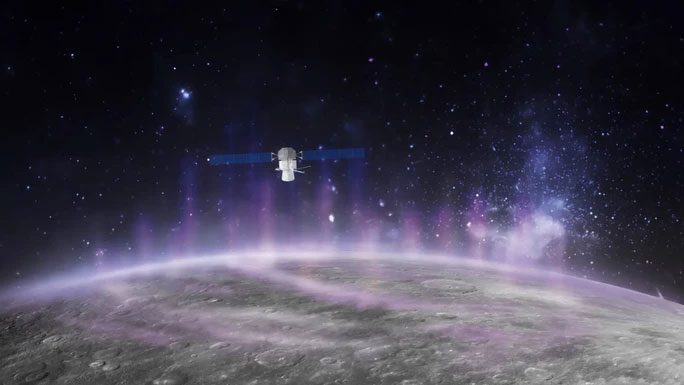During its flybys of Mercury, the BepiColombo spacecraft, a joint mission by the European Space Agency (ESA) and the Japan Aerospace Exploration Agency (JAXA), has captured mysterious plasma waves described as “singing.”
A research team from Japan and France, led by astronomer Mitsunori Ozaki from Kanazawa University (Japan), discovered this unique phenomenon while analyzing data from BepiColombo’s Magnetometer Instrument (MIO).
According to Science Alert, researchers found clear evidence of strange waves that, if converted to frequencies audible to the human ear, would sound like chirping and whistling, akin to someone trying to harmonize with birdsong.

BepiColombo spacecraft and Mercury – (Photo: ESA/JAXA).
This type of wave is referred to as “choral waves,” which scientists have long suspected Mercury might possess.
These sounds are certainly not human singing, whistling, or actual bird calls. Instead, the choral waves occur when high-energy electrons become trapped in a planet’s magnetosphere, spiraling along magnetic field lines and generating waves in the plasma.
The choral waves on Mercury are significantly different from those found on most other celestial bodies: They only appear in a small part of the magnetosphere, within a wedge-shaped region known as the “dawn region.”
This indicates that the planet has some unique physical mechanisms that promote choral waves in this area while diminishing them in others.
The research team believes this important discovery could illuminate the magnetic environment surrounding Mercury and how solar wind shapes the magnetic fields of planets in general.
Scientists hope to capture more “songs” and additional data about this unique planet as BepiColombo eventually enters a stable orbit around Mercury.
Currently, the spacecraft is only conducting flybys of Mercury, a process that will take several years before it can reach the proper position to officially orbit the planet.


















































